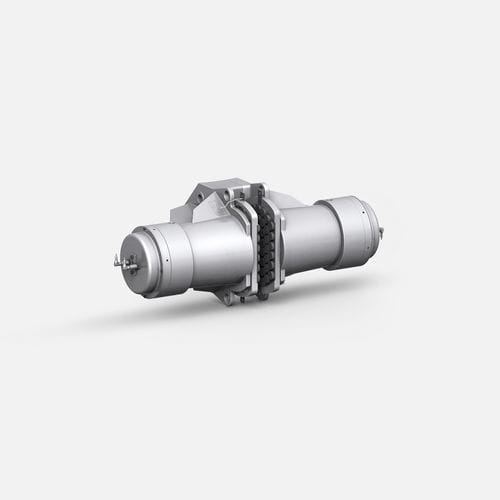
- Power Transmission - Mechanical components
- Mechanical Transmission
- Disc brake
- VULKAN Industry and Energy
- Company
- Products
- Catalogs
- News & Trends
- Exhibitions
Disc brake springhydraulicfailsafe
Add to favorites
Compare this product
Characteristics
- Type
- disc
- Operation
- spring, hydraulic
- Other characteristics
- failsafe, emergency, parking
- Torque
Max.: 622,050 Nm
(458,800.535 ft.lb)Min.: 1,150 Nm
(848.1965 ft.lb)
Description
VULKAN hydraulic brakes are available as positive brakes (hydraulically actuated, spring ventilated) negative brakes (spring-loaded actuation, hydraulically ventilated) and with a spring or floating brake disc or with two springs and fixed brake disc. The VULKAN portfolio includes a wide choice of brake calipers with complete accessories, including hydraulic unit, electronic control and special electronics unit which continuously monitors the conveyor system speed and adjusts as required. The VULKAN range also includes different hydraulic units with various functions: from the simple CH1 circuit “ON/OFF” to the CH6 sophisticated digital proportional braking system which can be adapted to customer requirements.
Hydraulic disc brake design
VULKAN hydraulic disc brakes are failsafe positive brakes available in single or double spring versions and with a comprehensive range of accessories, including position detection sensor and pad wear control including 5 different hydraulic units for brake caliper proportional adjustment. A range of pressure cylinder options are available. The hydraulic disc brake is available for different brake disc thicknesses and can be supplied as a complete unit.
Benefits
Failsafe brakes
Proportional braking action
High braking force
Brake and brake pad monitoring available
All disc diameters and strengths can be installed
Digital control of proportional braking system
Catalogs
No catalogs are available for this product.
See all of VULKAN Industry and Energy‘s catalogsRelated Searches
- Clamp
- VULKAN flexible coupling
- VULKAN shaft coupling
- VULKAN friction brake
- VULKAN flange coupling
- VULKAN torque coupling
- Spring brake
- Disc brake
- Electromagnetic brake
- Rigid shaft coupling
- Backlash-free coupling
- VULKAN transmission coupling
- VULKAN sleeve coupling
- VULKAN compact coupling
- VULKAN engine coupling
- Hydraulic clamping device
- Misalignment correction shaft coupling
- High-torque shaft coupling
- Disc shaft coupling
- Hydraulic brake
*Prices are pre-tax. They exclude delivery charges and customs duties and do not include additional charges for installation or activation options. Prices are indicative only and may vary by country, with changes to the cost of raw materials and exchange rates.

